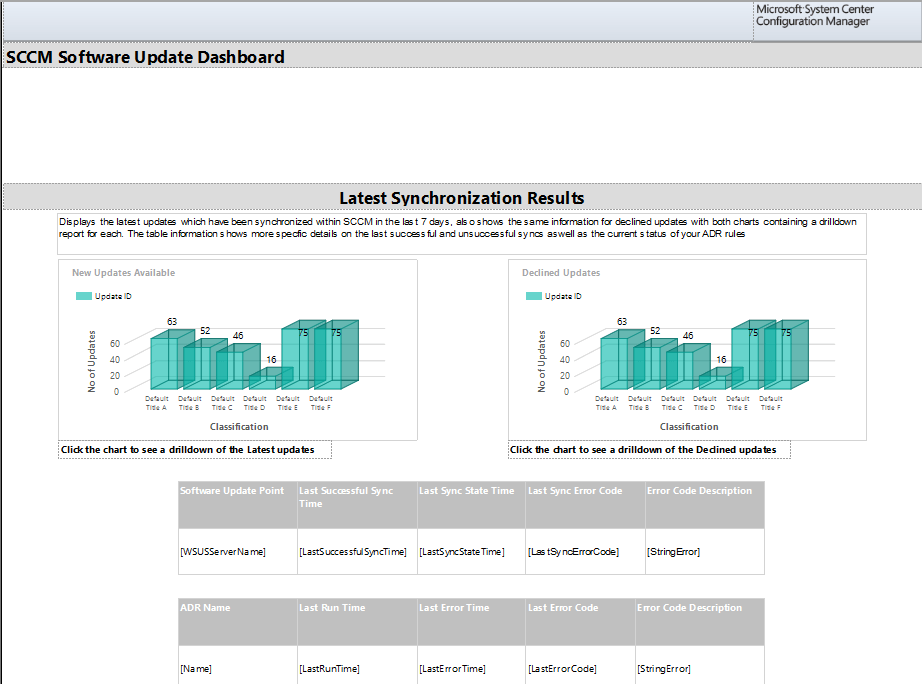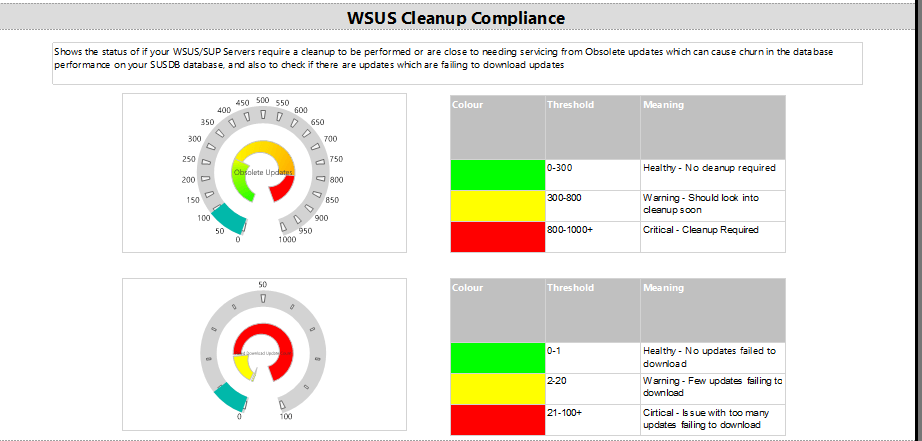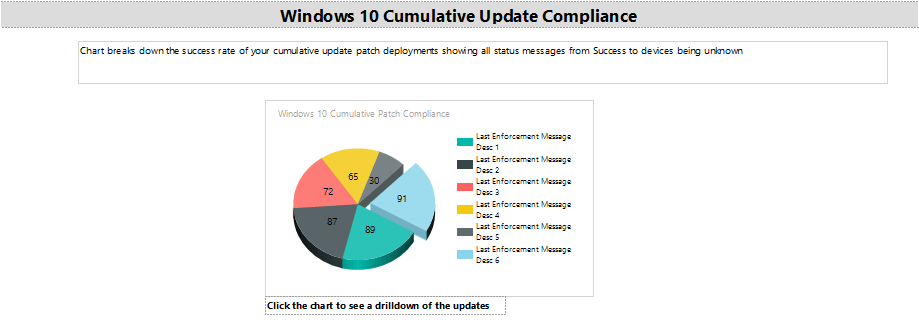SCCM Software Update Dashboard
Available on the Technet Gallery, see your deployment forecast ahead of time!
Overview
This dashboard provides a full SPOG (Single Pane of Glass) look into your entire WSUS/SUP infrastructure to see exactly how all deployments are running, and what your overall expected successful forecast figures will be.
There are various sections which go into the dashboard so the following sections will provide a breakdown to each part of the report.
The great feature about this dashboard is that it contains a drilldown on the majority of the charts and in a neutral format as possible i.e. each chart has a drilldown with specific sections but instead of each drill down zoning only into results into a specific section it will display all the results with interactive sorting so you can see everything and also sort interactively.
Enhanced Error Code Analysis
I have pulled a list of WSUS codes from the Microsoft site and saved them into a .CSV file which I had put into a separate table in my SCCM Database which is able to be merged with a lot of the results pulled from this dashboard and has been configured so that you can see the full error message description as well as the code.
Latest Synchronization Results
Displays the latest updates which have been synchronized within SCCM in the last 7 days, also shows the same information for declined updates with both charts containing a drilldown report for each. The table information shows more specific details on the last successful and unsuccessful syncs as well as the current status of your ADR rules.
WSUS Clean-up Compliance
Shows the status of if your WSUS/SUP Servers require a clean-up to be performed or are close to needing servicing from Obsolete updates which can cause churn in the database performance on your SUSDB database, and also to check if there are updates which are failing to download updates
Successful Deployment Forecast
Breakdown of clients by hardware and further category breakdowns of online devices to measure successful patch deployment forecasts. Many devices can be unavailable from deployments which are currently scheduled and this gives a great detailed look at what your expected success rate will be. By default looks specifically at the "All Desktops and Server Clients" collection
One very different Pie chart is for Last Scan states, so this in particular will show how many of have successful scans and failed scans, as these can show if they will have problems when receiving any kind of update deployments
Definition Updates Compliance
Definition updates compliance for Windows Defender and Endpoint Protection. Ranging from up-to-date to older than 7 days. The Windows Defender section will focus specifically on the Windows 10 Devices whilst the Endpoint Protection chart will show from devices ranging at Windows 8.1 and lower
Windows 10 Cumulative Update Compliance
Chart breaks down the success rate of your cumulative update patch deployments showing all status messages from Success to devices being unknown
Current Software Update Deployment Assignments
Chart breaks down the success rate of your cumulative update patch deployments showing all status messages from Success to devices being unknown
Where to Download
This is currently available on the Technet Gallery on the link below
https://gallery.technet.microsoft.com/SCCM-Software-Update-2dbd8d6b














